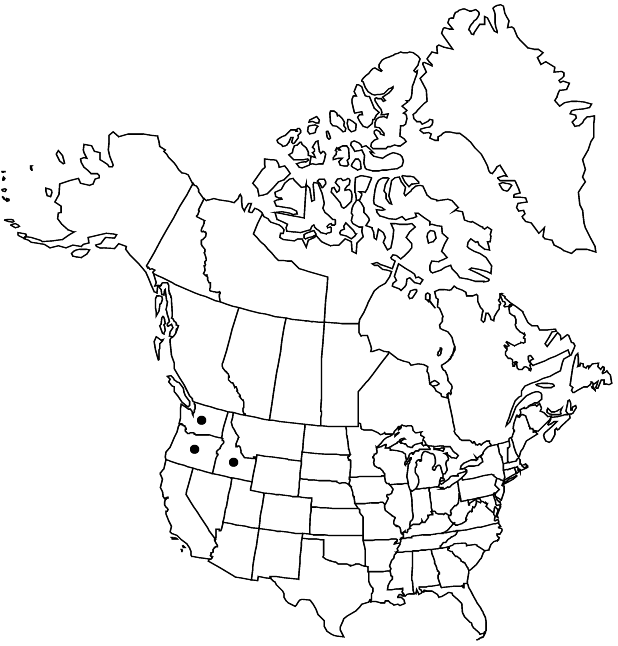Difference between revisions of "Ribes cereum var. colubrinum"
in C. L. Hitchcock et al., Vasc. Pl. Pacif. N.W. 3: 69, plate [p. 72], fig. s.n. [upper right center]. 1961,.
Common names: White squaw currant
Endemic
FNA>Volume Importer |
imported>Volume Importer |
||
| (2 intermediate revisions by 2 users not shown) | |||
| Line 1: | Line 1: | ||
{{Treatment/ID | {{Treatment/ID | ||
|accepted_name=Ribes cereum var. colubrinum | |accepted_name=Ribes cereum var. colubrinum | ||
| − | |accepted_authority=C. L. Hitchcock | + | |accepted_authority=C. L. Hitchcock |
|publications={{Treatment/Publication | |publications={{Treatment/Publication | ||
|title=in C. L. Hitchcock et al., Vasc. Pl. Pacif. N.W. | |title=in C. L. Hitchcock et al., Vasc. Pl. Pacif. N.W. | ||
| Line 7: | Line 7: | ||
}} | }} | ||
|common_names=White squaw currant | |common_names=White squaw currant | ||
| + | |special_status={{Treatment/ID/Special_status | ||
| + | |code=E | ||
| + | |label=Endemic | ||
| + | }} | ||
|basionyms= | |basionyms= | ||
|synonyms= | |synonyms= | ||
| Line 31: | Line 35: | ||
-->{{#Taxon: | -->{{#Taxon: | ||
name=Ribes cereum var. colubrinum | name=Ribes cereum var. colubrinum | ||
| − | |authority=C. L. Hitchcock | + | |authority=C. L. Hitchcock |
|rank=variety | |rank=variety | ||
|parent rank=species | |parent rank=species | ||
| Line 44: | Line 48: | ||
|publication title=in C. L. Hitchcock et al., Vasc. Pl. Pacif. N.W. | |publication title=in C. L. Hitchcock et al., Vasc. Pl. Pacif. N.W. | ||
|publication year= | |publication year= | ||
| − | |special status= | + | |special status=Endemic |
| − | |source xml=https:// | + | |source xml=https://bitbucket.org/aafc-mbb/fna-data-curation/src/2e0870ddd59836b60bcf96646a41e87ea5a5943a/coarse_grained_fna_xml/V8/V8_33.xml |
|genus=Ribes | |genus=Ribes | ||
|species=Ribes cereum | |species=Ribes cereum | ||
Latest revision as of 22:42, 5 November 2020
Leaf blades 1.5–3 cm wide, surfaces glabrous. Bracts ovate to obovate, margins entire or sharply denticulate or with 2 or 3 shallow sinuses, apex acute. Flowers: sepals glabrous or sparsely to densely pubescent, not stipitate-glandular; ovary glabrous or sparsely to densely pubescent. 2n = 16.
Phenology: Flowering Apr–Aug.
Habitat: Dry habitats in conifer and oak woodlands
Elevation: 500-1600 m
Distribution

Idaho, Oreg., Wash.
Discussion
Selected References
None.
Lower Taxa
None.